Are we allowed to use F-word anymore?
My childhood was rife with it.
When did hi-fi stop being fun?
Some of you pushed back at my recent pronouncement that gear fetishism has ruined high-end audio — but it is one of the few hills that I am willing to die upon.
Obsessing over every new piece of equipment instead of focusing on what you already own and enjoying music in the process has damaged this industry — and also turned a lot of potential audiophiles off in the process.
25 years and 3,000 articles later — the fun of listening has been soiled for myself as well.
If listening to music on a better quality hi-fi system or pair of headphones is not a fun experience for you — perhaps it’s time for another hobby.
What does any of this have to do with Q Acoustics M40 Powered Micro Towers?
Everything.
Not only have these compact micro-tower loudspeakers that are only 28 inches tall thrown me for a loop — but I’m still confused how they can be only $999/pair USD.
Primarily because they offer so much trickle-down technology from the Q Acoustics 5000 series loudspeakers.
If you have followed our rather extensive coverage of the Q Acoustics 5000 Series, which includes the award-winning 5020 bookshelf loudspeakers and 5040 floor standing loudspeakers, you have read about the latest Q Acoustics advancement in driver technology: the C3 Continuous Curved Cone mid/bass driver.
C3 (pronounced ‘C cubed’) combines the bass performance of a traditional straight cone with the high/midrange control and fidelity of a flared cone.
In addition, the M40 features a decoupled tweeter, along with Helmholtz Pressure Equalizer (HPE) technology to reduce unwanted standing waves inside the cabinet.
The cabinet features Q Acoustics’ proprietary Point to Point (P2P) internal bracing to keep the speaker as rigid and inert as possible.


Setup
Right out of the box, it’s clear that these are very solid and well made; the cabinet can be unwieldy in your hands if you don’t get a solid grip on it.
Flipping the loudspeakers to install the separate base pieces is easy but I would put a towel underneath as to not scratch the top surface. Q Acoustics provide everything that you need including the tools and I had both sets installed in less than 10 minutes.
Remember to watch your fingers when you flip the loudspeakers because the supplied spikes are very sharp.
There are some design and installation items that you should be aware of during the set-up process.
As well as being able to designate the powered speaker as either the left or right channel (to make accessing mains power as simple as possible), there’s also an EQ switch to let the system know if each speaker is positioned in a corner, against a wall or in free space.

The aforementioned EQ switch is not a gimmick and was something that I used for reasons that I will explain in our listening impressions.
Particular attention has been given to the M40 grille design. Fixing the grille to the baffle, rather than be removable, allows for added strength derived from the baffle and significantly reduces the grille’s structure, particularly around the drivers.
The result of the M40’s open grille design minimizes disruption of sound dispersion patterns, while reducing reflections for a smoother sonic performance.
Both loudspeakers are powered by a 100 watt (50 watts per channel) class D amplifier that is housed in the primary loudspeaker.
The M40 also supports Bluetooth 5.0 with aptX HD and aptX LL compatibility.
The volume control and source button on the top panel of the primary loudspeaker works as designed; but I did use the supplied remote control and the volume slider on my iPhone 12 for the most part.

Who is This For?
We have known about the M40 for a number of months and you can listen to our podcast with the Q Acoustics team to learn more about its design ethos and where they feel it sits within the existing wireless category.
The height of the M40 will certainly raise a few eyebrows but the reality is that Q Acoustics are not the first manufacturer to offer a pair of floor standing loudspeakers that are less than 30 inches high and our experience with some of them has been rather positive.
Neat Acoustics’ IOTA Alpha Loudspeakers are even shorter than the M40 and compensate for their 45 cm height by angling the drivers upward into the room; a pair of the British loudspeakers occupied my last listening space in Teaneck for over 3 months and were surprisingly more than enough to fill our 20′ x 11′ x 9′ living room at the time.
Q Acoustics assured me that the tweeter’s height would not prove to be an issue and for the most part, they were correct. Being 6’3″ places me rather high off the ground whilst sitting on my sofa, and there was a concern that the sound would be rather dull and lacking in detail because of that discrepancy.
Never judge a loudspeaker by its size.
There is especially true for the M40; those who fancy a rather full-range sound in a very small pair of loudspeakers will be enthralled by their bass performance — but that will require some compromise in regard to placement.

Unlike the M20 HD on my desk, the M40 utilize Q Acoustics’ latest driver technology and having listened to the 5040 with over 15 amplifiers so far in less than 12 months — the decision to use the same C3 Continuous Curved Cone mid/bass drivers in a pair of active loudspeakers is a very exciting development.
The speakers can be integrated into a 2.1 music/home theater system through its optical input and subwoofer output.
Support for aptX, aptX HD, aptX Low Latency, SBC, and AAC makes them compatible with a range of smartphones, tablets, and laptops.
I ran a 3 meter QED USB Type-B Cable from my Apple MacBook Pro into the USB input and also utilized a WiiM Pro Plus Streamer (hardwired to my router) which was connected through the RCA inputs to see if there was a discernible difference in sound quality compared to Bluetooth.
There was. And that should not surprise anyone.
The one notable omission is the absence of a phono pre-amplifier; the decision to keep the loudspeaker priced below $999 USD impacted that design choice.
I disconnected the WiiM Pro Plus and connected the Pro-Ject Tube Box DS2, Andover SpinStage, and Moon By SimAudio LP110 V2 Phono Pre-amplifiers to see which unit worked the best with the Pro-Ject X2 B and Thorens TD-160 Super providing the turntable support.
I also experimented with 2-inch thick concrete slabs underneath each loudspeaker to see if the height difference changed the sound.

Specifications
- Power Supply Voltage 100V-240 VAC, 50-60 Hz
- Power Consumption Standby / Typical use <0.5 Watts / ~10 W
- Peak Power Output 2 x 100 W
- Rated Output Power (4 Ohms) 2 x 50 W RMS
- THD @ Rated Power <0.7%
- Enclosure type 2-way reflex (ported)
- Mid/Bass unit 2 x 125 mm (5.0 in)
- Treble unit 1 x 22 mm (0.9 in)
- Crossover frequency 2.5 kHz
- Frequency Response (-6dB) 38 Hz – 22 kHz
- Analog Inputs (2 x RCA)
- Sensitivity 700 mV RMS
- Max. input level 2.15 V RMS
- Analog Input (3.5mm Jack)
- Sensitivity 400 mV RMS
- Max. input level 1.25 V RMS
- Optical (S/PDIF) TOSLINK (Maximum resolution: 24-bit/192kHz)
- USB Type B connector (Maximum resolution: 24-bit/192kHz)
- Bluetooth version 5.0
- Supported codecs aptX, aptX HD, aptX Low Latency, SBC, AAC
- Sub out (Phono) with Max. Output 1 V RMS
- Dimensions (W x H x D) 250 mm x 710 mm x 296 mm (10” x 28” x 11.7”) with stabilizers
- Weight
- Amplified speaker 12.4 kg (27 lb 5 oz)
- Passive speaker 11.8 kg (26 lb)

Listening
There are some who will say that I came into this review with some form of bias because I already own multiple pairs of Q Acoustics Loudspeakers and clearly love the “house” sound and people behind it.
There is some truth to that, but I also own KEF, PSB, Magnepan, Acoustic Energy, and DALI loudspeakers as well — so I’m really not locked into one particular sound.
But there is something about the Q Acoustics M40 that makes me want to buy them and perhaps additional pairs for other rooms in the house.
Listening to them is an enormous degree of fun — and there is has been very little of that in my life over the past 12 months.
Music is supposed to bring one joy and when you have access to some of the best hi-fi equipment in the world — that should be one of the easiest things in the world to accomplish.
One of the most striking things about the M40 is the scale of its sound reproduction; and whilst its off-axis performance could be more even sounding in my 16′ x 13′ x 9′ listening space — there is something rather impressive taking place in-between these two loudspeakers.
The M40 excels with good recordings, but is also somewhat forgiving to lesser ones as well.

Unlike the Q Acoustics 5040 that offers a very neutral sounding presentation with an extremely open and detailed sounding treble range, the M40 is warmer sounding and slightly softer in the top end.
That should not be misinterpreted as “the M40 is thicker sounding and less resolving” because midrange clarity is very good and the treble range is definitely more open sounding than the 3050i.
I was tempted to start with a number of hi-res jazz and pop recordings, but something about the M40 made me scroll through my TIDAL and Qobuz playlists for a selection of Metallica, Rush, AC/DC, Van Halen, and Iron Maiden to see if these micro-towers could actually deliver on the marketing claims of the British manufacturer.
Metallica’s “One” from …And Justice For All felt like the right place to start and it wasn’t very long before these speakers demonstrated they require far more space from the wall behind them than one might expect, and that they can really handle bass heavy tracks and deliver excellent extension and impact from a rather compact cabinet.
The low end response is so strong that I had to stop the music and move the loudspeakers almost 20″ from the wall to avoid overloading the room.
I almost started this review with “Is that a subwoofer in your pants, or are you just happy to see me?” but that would have been misleading and also unfair because there is a lot more to these speakers than just the bass range.
Whilst it would be fair to call the 3050i somewhat restrained in the pacing department, the M40 feels far more adept at matching the tempo of whatever you feed it.
The quickness and dynamic capabilities of the 5000 series are on display here — but you do sacrifice some of the breathtaking clarity of the 5020 or 5040 and that became more obvious the longer I listened and raised the stakes with higher quality sources.

When you remember that most listeners will be streaming directly from their smartphones or tablets — the overall presentation still delivers far more than any of the wireless speakers below $1,000 that we have tried so far.
New Order’s “Age of Consent” was thrust forward into the room by the M40 energizing the space with strong bass lines and the track’s energy had me dancing from one end of the room into the front hallway where Tyrion started barking at the sight of my jubilation.
Depeche Mode, Echo and the Bunnymen, and Talking Heads filled the house with a barrage of 1980s New Wave that hit with far more impact than the 5040 driven by the Cambridge Audio Edge A; which is not a knock against the $7,500 combination compared to the $999 M40.
The 5040 delivers far more insight into the music, and the soundstage stretched from one side of the room to the other. There is no question that the 5040/Edge A combination can deliver greater dynamic shifts with less strain and that vocal clarity borders on “electrostatic” quality with some recordings — but there is also the issue of connection.
One had me thinking about the music with my rather clouded mind. The M40 had me feeling the music and imagining someone very special whose body I wanted to feel against mine as we moved with the beat.
Love. Emotion. Desire. A longing for the past.

Final Thoughts
What makes the Q Acoustics M40 so successful is that it truly understands its purpose as a loudspeaker.
It’s never going to overwhelm you with too much detail and that’s perfectly fine; what it does offer with most recordings proved to be enough and there were moments with better quality recordings that demonstrated that these speakers can illuminate what might be hidden in the background. It’s just not the primary focus.
The low end response of these loudspeakers is robust, well defined, and certainly going to please those who desire a “full range” sound for both music and movies, and don’t have the budget right now for a subwoofer.
Do you need a subwoofer with the M40? It’s most certainly room dependent and not something I would rush into.
Vocals are clean, warmer sounding, and most certainly pushed slightly forward of the loudspeakers.
These might seem like slightly aggressive sounding loudspeakers because of the low end performance, but I would push back on that notion; the top end does not deliver the last degree of detail and you are not going to experience the airiness of the 5020 or 5040, but it’s still a very pleasing treble range that makes a lot of modern pop sound less strident.
The off-axis balance could be better; sitting off to the side of the left speaker in my den, there was a definite drop-off in midrange clarity and top end detail. When I stood up and starting moving back towards my listening seat, everything snapped back into focus.
Are they worth $999 USD? Without question.
I would certainly not place them too close to the wall behind them; and please leave the bass port pucks in the box where they belong. I’ve never had any success with them over the years with a wide range of Q Acoustics models and you will achieve better results by pulling the speakers further away from the wall.
When life returns to normal, I will be listening to these daily and expect some updates in regard to better sources. Bluetooth speakers have really taken a big step forward with the M40.
Fun is back. And not a moment too soon.
Where to buy: $999 at Amazon
Related Reading:




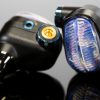
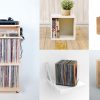





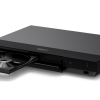
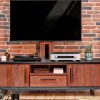






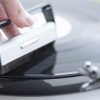

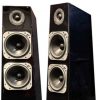


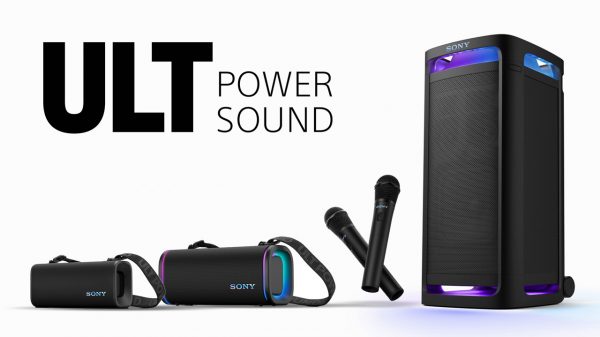
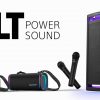













Larry
April 1, 2024 at 12:47 pm
Hi Ian,
I enjoyed your review and agree with your concept of fun in Hi-Fi. I’m a big fan of the Pareto Principle (the 80/20 rule) for many things in life. How much would someone need to spend to get a noticeable improvement in the sound quality of the M40s, likely an additional $4,000 for the KEF LS60s, if you wanted an all-in-one solution? Unfortunately, the folks who would benefit most from your review will never see it or recognize how valuable your insights are.
Amazingly, adding a Wiim streamer makes this a game-changer for bang for the buck and simplicity.
Ian White
April 2, 2024 at 1:28 pm
Larry,
You would be surprised how many people will see this review, but your point is well taken.
I also own the KEF LSX II which are used in my home dining room. There are items about the KEF that I like more (control app, Wi-Fi, overall tonal balance), but the M40 delivers music with greater intensity and you do not require a subwoofer with these.
The KEF’s stands are also way too expensive taking them to almost $1,800.
I could add a turntable and WiiM streamer to the M40 for the total cost of the KEF LSX II and the stands.
I didn’t expect to love the M40 this much. And I’m just getting started with them.
Best,
Ian White
Mike Cornell
April 1, 2024 at 12:51 pm
These sound very intriguing, Ian, and I love the compact size. I kind of wish they had an hdmi-e-arc port, which may be a deal-breaker for me and seems like an oversight on Q-Acoustics part.
Ian White
April 2, 2024 at 1:24 pm
Mike,
I’ve only had a chance to listen to them briefly in a 2.1 system with my LG OLED, and whilst I would agree that having an HDMI ARC/eARC port would have been preferable, the optical input works just fine.
I do think apartment owners should consider these rather seriously. They do not take up a lot fo space, look great, and the focus on the bass range and lower midrange makes them a lot of fun to listen to.
When I asked Q Acoustics during the podcast about the decision to not include a phono pre-amp and HDMI…the answer seemed to be “we needed to keep these below $1,000” and decisions needed to be made.
I am 100% buying a pair for myself.
Best,
Ian White
Larry
April 2, 2024 at 2:10 pm
Ian and Mike,
It’s relatively painless to add HDMI ARC to the M40s by adding an SMSL PS100 DAC. Amazon sells them for $30.
Larry
Mike Cornell
April 3, 2024 at 11:38 am
Good point, Larry, and if you’re going to add streaming capability anyway, something like a Bluesound Node etc would also do the trick.